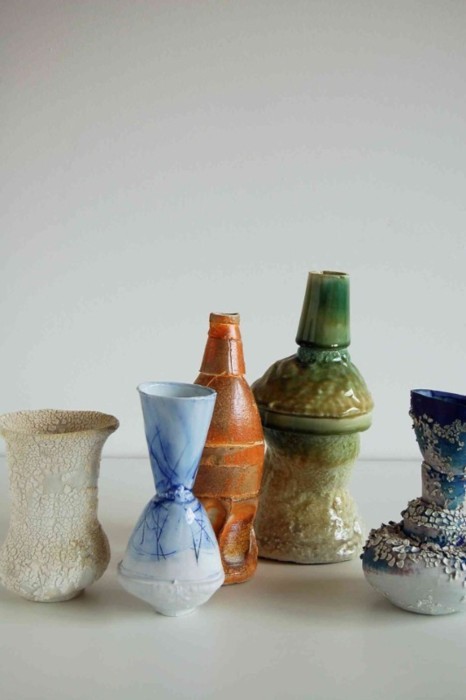Johannes Nagel
Johannes Nagel’s profile on Ceramics Now Magazine - View his works
“A vessel has as its reference its own stylistic history and the function. To conserve, or serve out or to present a certain content, is an orientation towards basic human needs. The necessity of producing the form in order to protect contents, meets up with the need to express oneself and to consecrate things and attribute a value to them. From the outset vessels were always designed. The forms emerged from out of the technical capabilities, the practical necessities and a sense for rituals. Rituals are the source of civilization and culture. They bestow a form upon what is lacking in design. A shared meaning develops in them, which goes above and beyond what is merely necessary to life and relates towards what is sublime and greater. From the need to represent and pay homage to this, all art has developed.
The rituals have changed, civilization has brought forth many flowers, art is ever the mirror. The manufacture of vessels is a self-evident cultural technique for all of mankind, and analogue to the role of the figure in sculpture, we can maintain that the ritual is the concrete opposite of the vessel.
And so the „vessel“ can today be a theme, in which function and ritual, our own history and the future may be reflected.
Do rituals relate to something sublime? Can they create a shared meaning? What sort of a function do vessels have today?”
“In the original axiom the form follows the function, as the shape which corresponds to the purpose. The functionality in this work is not related to the potential of a thing to be useful, but rather to the logic involved in its manufacture.
The necessary work steps to make a form mould with which objects can be reproduced in porcelain, are subject to specific preconditions. A sort of three dimensional stereotype has to be made in plaster, which forms a closed volume, or receptacle for the liquid porcelain. The usually many-pieced stereotypes must then be capable of being taken apart, so that the model around which they have arisen, and subsequently the reproduced object shall not be damaged.
I interrupt this process before it is finished and use the stereotype incompletely. The function of (pouring) the form is extended. As a fragment it becomes part of the object and forms a threshold, a border, like the frame which separates the picture from the wall.” Johannes Nagel
Visit Johannes Nagel’s website.
→ View our featured ceramic artists list (posts).
→ Subscribe to our monthly newsletter and like our Facebook page if you want to stay in touch with us.




